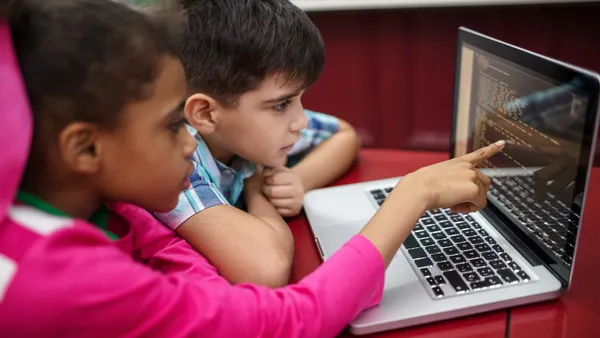Dive Brief:
- Common Sense Media noted in 2015 that teenagers spend an average of nine hours online each day, Sandy Oreo, a secondary school teacher in Brisbane, Australia, writes for EdSurge — but whether that screen time is passive or active makes a significant difference in their learning.
- Limiting passive use is key, as active content or games, like those that encourage physical activity, produce a different result in the way children focus, than while they’re watching a YouTube video.
- Ensuring that these active programs are enjoyable to students, that they teach a new skill or tool, and that they encourage participation beyond just clicking or tapping on a screen or scrolling to the next image is also critical to success.
Dive Insight:
Screen time is a ubiquitous part of our lives, whether we’re engaging with computers or smartphones. For students, however, limiting the use of screens to more active engagement, rather than passive content consumption, can impact their learning. Anyone who has ever spent time watching a movie during class versus using a computer to collaborate with classmates on a project knows the difference between how screen time can spark their brain or lull it into a stupor.
It’s important, then, when administrators are looking to bring more technology into schools, to ask how those tools and devices are going to be woven into the curriculum. Students absolutely need exposure to technology, and these devices can be powerful learning tools. But students also need best-practice modeling on how to engage with these tools.
The passive use of technology isn't always negative, either. Movies viewed on screens of all sizes are more than just fun diversions — they can expand our understanding the world. But real learning is never a passive activity, and educators should focus on identifying content and products that encourage active use.
Active engagement with technology can include coding, writing and creating projects online with peers — actions that turn students into producers, not consumers. Even the youngest of students may benefit from active screen time, which can help to “improve word knowledge and verbal fluency” in preschoolers, according to a paper from the Queensland University of Technology titled “Active versus Passive Screen Time for Young Children.” Even playing video games is not discouraged by the authors, who found these programs can “improve problem solving and inductive reasoning.”
When implemented thoughtfully, and with curriculum in mind, active screen time may allow students to take concepts and information they’re learning and put them into practice, helping to better embed these lessons.






 Dive Awards
Dive Awards






